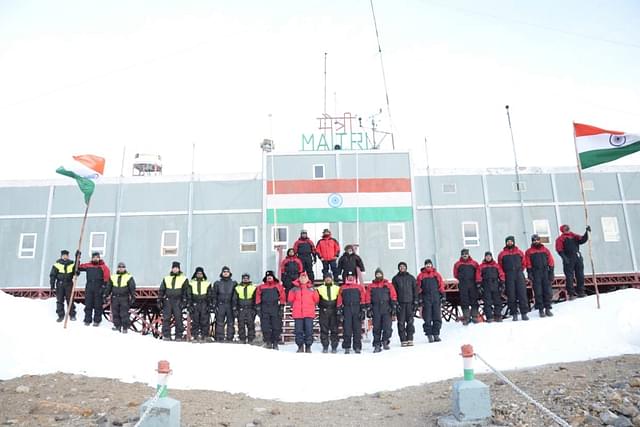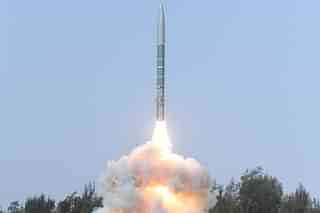Science
India To Build New Antarctic Research Station 'Maitri 2' By 2029; Earth Sciences Ministry Reveals Timeline
Karan Kamble
Dec 23, 2023, 06:58 PM | Updated 07:11 PM IST
Save & read from anywhere!
Bookmark stories for easy access on any device or the Swarajya app.

India will have a new research station built in Antarctica before the end of this decade, with the new ‘Maitri 2’ replacing its “very old” predecessor.
The proposed station will be established in East Antarctica, near the existing Indian research base, Maitri. It is expected to improve upon the quality of Indian scientific research coming out of the “white continent.”
The Indian government has identified a site to set up the new station, while the preliminary topographical survey for the approach road is currently underway, Minister for Earth Sciences Kiren Rijiju revealed in a written reply in the Rajya Sabha on Thursday (21 December).
“It is imperative to build a new research station,” said a Ministry of Earth Sciences note, stating that the existing, over-three-decade-old Maitri is very old.
As per the timeline provided in the government note, the construction of the station will be completed by January 2029. (See the timeline here.)
The need for an upgrade to Maitri has been clear for many years.
In 2017, speaking on the sidelines of a ship-building-related programme, then-secretary to the Ministry of Earth Sciences, Madhavan Nair Rajeevan, said: “The Maitri station will be replaced by a new station in the next three to four years.”
“There is an urgent need for the revamping of the Maitri station, which is more than 35 years old. The NCPOR is focusing on the same,” then-director of the National Centre for Polar and Ocean Research (NCPOR) Mirza Javed Beg told The Indian Express in April 2022.
He had said further that two research stations weren't sufficient for a vast continent like Antarctica, but also admitting that "building more stations is also not a viable option."
The National Centre for Polar and Ocean Research (NCPOR), Goa, an autonomous institute under the Ministry of Earth Sciences, manages the Indian Antarctic programme. It is responsible for the country’s research activities in the polar and Southern Ocean realms.
The regions around the North and South Poles — the Arctic and Antarctic regions, respectively — are important natural laboratories for scientific research.
Antarctica in particular is situated within the Antarctic Circle and surrounded by the Southern Ocean.
India’s scientific expeditions to Antarctica commenced in 1981, touching base on the continent the next year. In 1983, the first permanent research station “Dakshin Gangotri” was established over the ice shelf in the central Dronning Maud Land region. The station was abandoned in 1990 after it got buried under snow.
The research base “Maitri” has been operational since 1988 in the central part of the Schirmacher Oasis in the central Dronning Maud Land region of East Antarctica.
Functional around the year, Maitri serves as a gateway to one of the largest mountain chains in central Dronning Maud Land.
The main building of the inland station can support 25 persons in summer and winter, and about 40 in the summer facility.
The latest station addition was “Bharati,” operational since March 2012 and located in the Larsemann Hills.
The Maitri and Bharati stations are approachable only during the austral summer season, between November and March.
The Indian Antarctic programme has completed 42 scientific expeditions thus far.
Save & read from anywhere!
Bookmark stories for easy access on any device or the Swarajya app.
Karan Kamble writes on science and technology. He occasionally wears the hat of a video anchor for Swarajya's online video programmes.
Introducing ElectionsHQ + 50 Ground Reports Project
The 2024 elections might seem easy to guess, but there are some important questions that shouldn't be missed.
Do freebies still sway voters? Do people prioritise infrastructure when voting? How will Punjab vote?
The answers to these questions provide great insights into where we, as a country, are headed in the years to come.
Swarajya is starting a project with an aim to do 50 solid ground stories and a smart commentary service on WhatsApp, a one-of-a-kind. We'd love your support during this election season.
Click below to contribute.





